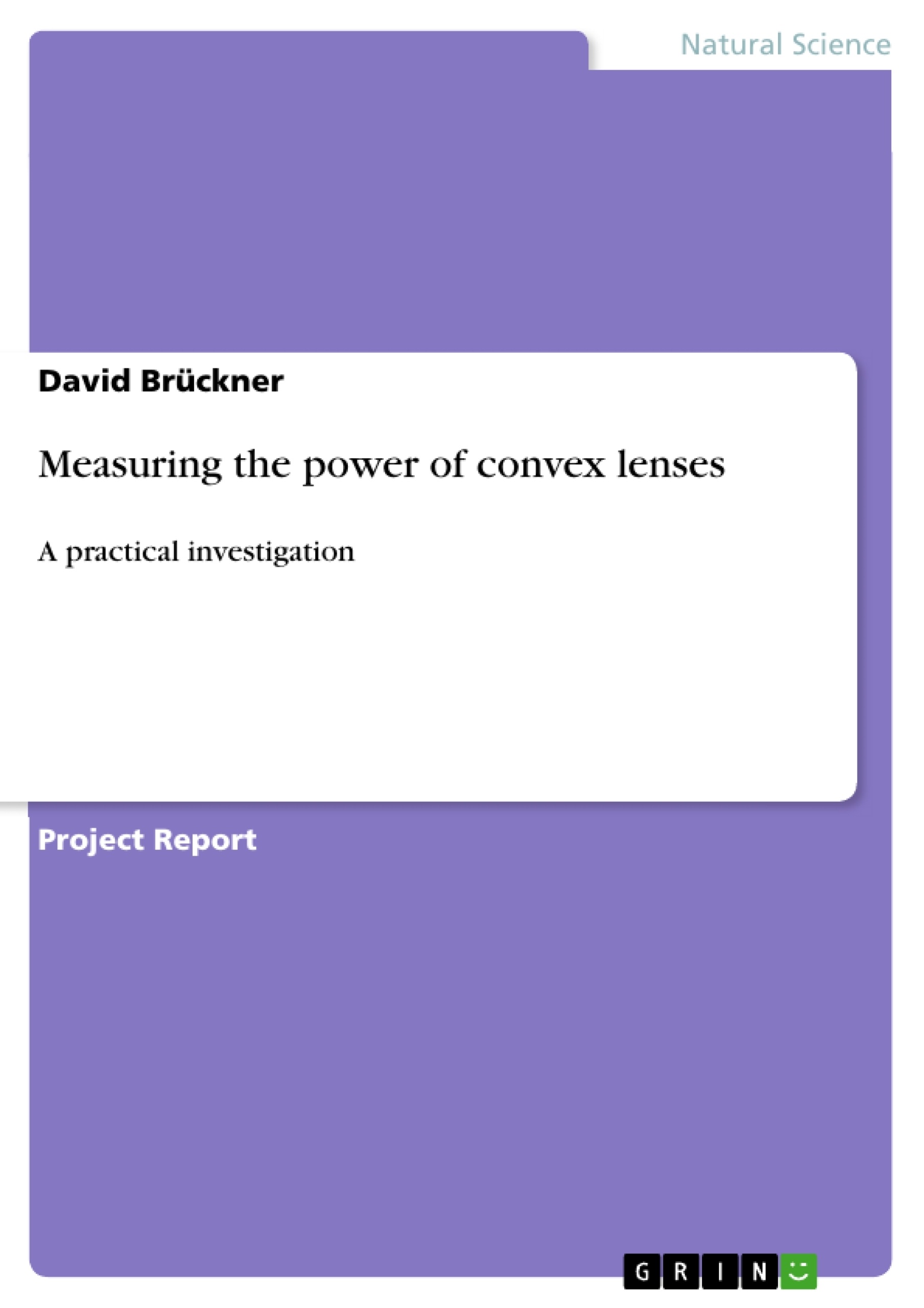This practical report outlines procedures for measuring the power of convex lenses and improvements to standard methods.
I have been given a box of 54 lenses with different powers, marked with different colours. My aim was to verify these given values, to find an improvement of my measurements and then to use this method to find the power of the lenses with unknown powers in the box and assemble them to the colour groups. The power has been calculated from measured values of u (distance from object to lens) and v (distance from focussed image to lens) by using the lens equation.
Inhaltsverzeichnis (Table of Contents)
- Introduction and Theory
- Aim
- Experimental Procedure
- First Experiment
- Second Experiment
- Results
- Calculations
- First Experiment
- Second Experiment
- Unknown Lenses
- Conclusion
- Definitions related to accuracy
- Typical sources of imprecision and bias
- The focal range
- Final results
- References and Picture Credits
- Appendix
- First experiment
- Second experiment
Zielsetzung und Themenschwerpunkte (Objectives and Key Themes)
This coursework aims to verify the power of a set of convex lenses through a series of experiments, utilizing the lens equation. The main objectives are:- To calculate the power of lenses using measured values of object distance (u) and image distance (v).
- To assess and improve the accuracy of the measurements by taking multiple readings and analyzing sources of uncertainty.
- To investigate the impact of the focal range on measurement accuracy and identify strategies to minimize its influence.
- To use the established method to determine the power of unknown lenses and classify them according to their focal length.
Zusammenfassung der Kapitel (Chapter Summaries)
- **Introduction and Theory:** This chapter introduces the lens equation and its application in calculating the power of convex lenses. It defines the relevant terms, such as object distance, image distance, and focal length, and explains the concept of curvature in dioptres. The lens equation is presented, emphasizing the importance of accurate measurements to ensure reliable results.
- **Aim:** This chapter outlines the specific aims of the coursework, which involve verifying the given focal lengths and powers of lenses, improving the accuracy of measurements, and using these techniques to determine the power of unknown lenses.
- **Experimental Procedure:** This chapter describes the experimental setup, including the materials used and the measurement techniques employed. It emphasizes the importance of maintaining a fixed object distance (u) and adjusting the image distance (v) to obtain a focused image. The chapter also discusses the significance of the focal range and its potential impact on accuracy.
- **Results:** This chapter presents the results of the experiments, including the calculated values for focal length and power. It also includes a discussion of the sources of uncertainty, such as the limited resolution of the measuring tools and the inherent variability in determining the focal point.
- **Conclusion:** This chapter provides an overall analysis of the results and their implications. It discusses the accuracy and precision of the measurements, the impact of the focal range on the uncertainty, and the reliability of the methods used. The chapter concludes with a summary of the main findings and their significance.
Schlüsselwörter (Keywords)
This coursework focuses on the power of convex lenses, exploring experimental methods to determine their focal length and power. Key concepts include the lens equation, measurement accuracy, sources of uncertainty, focal range, and error analysis. The experiment utilizes a simple optical setup to measure the object distance (u) and image distance (v) to calculate the power of the lenses.
Excerpt out of 29 pages
- scroll top
- Quote paper
- David Brückner (Author), 2011, Measuring the power of convex lenses, Munich, GRIN Verlag, https://www.hausarbeiten.de/document/207222
Look inside the ebook


